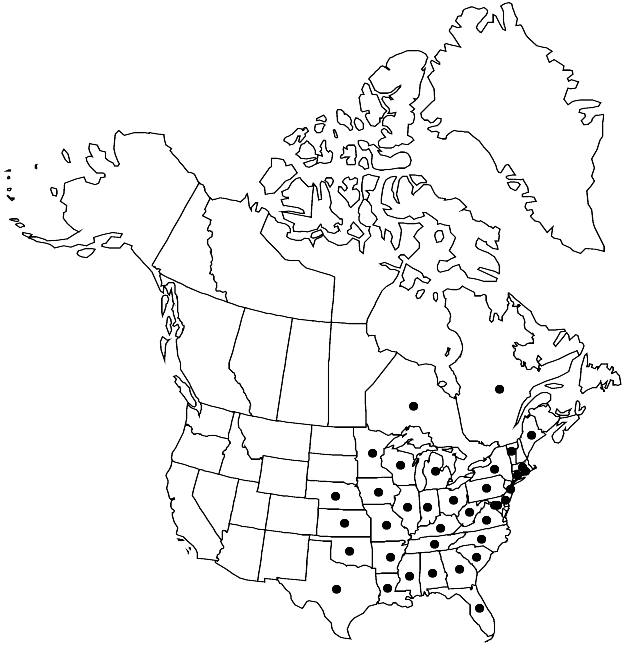Difference between revisions of "Entodon seductrix"
Linnaea 19: 214. 1846.
FNA>Volume Importer |
imported>Volume Importer |
||
| (6 intermediate revisions by 2 users not shown) | |||
| Line 11: | Line 11: | ||
|label=Endemic | |label=Endemic | ||
}} | }} | ||
| − | |basionyms={{Treatment/ID/ | + | |basionyms={{Treatment/ID/Basionym |
|name=Neckera seductrix | |name=Neckera seductrix | ||
|authority=Hedwig | |authority=Hedwig | ||
| + | |rank=species | ||
| + | |publication_title=Sp. Musc. Frond., | ||
| + | |publication_place=208, plate 47, figs. 8 – 13. 1801 | ||
}} | }} | ||
|synonyms={{Treatment/ID/Synonym | |synonyms={{Treatment/ID/Synonym | ||
|name=Cylindrothecium demetrii | |name=Cylindrothecium demetrii | ||
|authority=Renauld & Cardot | |authority=Renauld & Cardot | ||
| + | |rank=species | ||
}} | }} | ||
|hierarchy=Entodontaceae;Entodon;Entodon seductrix | |hierarchy=Entodontaceae;Entodon;Entodon seductrix | ||
| Line 32: | Line 36: | ||
|elevation=low to moderate elevations | |elevation=low to moderate elevations | ||
|distribution=Ont.;Que.;Ala.;Ark.;Conn.;Del.;D.C.;Fla.;Ga.;Ill.;Ind.;Iowa;Kans.;Ky.;La.;Maine;Md.;Mass.;Mich.;Minn.;Miss.;Mo.;Nebr.;N.J.;N.Y.;N.C.;Ohio;Okla.;Pa.;R.I.;S.C.;Tenn.;Tex.;Vt.;Va.;W.Va.;Wis. | |distribution=Ont.;Que.;Ala.;Ark.;Conn.;Del.;D.C.;Fla.;Ga.;Ill.;Ind.;Iowa;Kans.;Ky.;La.;Maine;Md.;Mass.;Mich.;Minn.;Miss.;Mo.;Nebr.;N.J.;N.Y.;N.C.;Ohio;Okla.;Pa.;R.I.;S.C.;Tenn.;Tex.;Vt.;Va.;W.Va.;Wis. | ||
| − | |discussion=<p>Entodon seductrix is the most common species of Entodon in eastern North America. It is recognized by strongly terete-foliate branches, broad, abruptly acute to apiculate leaves, red setae, a persistent annulus, and essentially smooth exostome teeth (the only species of Entodon with this character). The capsule is usually somewhat wrinkled when dry and empty.</p> | + | |discussion=<p><i>Entodon seductrix</i> is the most common species of <i>Entodon</i> in eastern North America. It is recognized by strongly terete-foliate branches, broad, abruptly acute to apiculate leaves, red setae, a persistent annulus, and essentially smooth exostome teeth (the only species of <i>Entodon</i> with this character). The capsule is usually somewhat wrinkled when dry and empty.</p> |
|tables= | |tables= | ||
|references= | |references= | ||
| Line 41: | Line 45: | ||
-->{{#Taxon: | -->{{#Taxon: | ||
name=Entodon seductrix | name=Entodon seductrix | ||
| − | |||
|authority=(Hedwig) Müller Hal. | |authority=(Hedwig) Müller Hal. | ||
|rank=species | |rank=species | ||
| Line 55: | Line 58: | ||
|publication year=1846 | |publication year=1846 | ||
|special status=Endemic | |special status=Endemic | ||
| − | |source xml=https:// | + | |source xml=https://bitbucket.org/aafc-mbb/fna-data-curation/src/2e0870ddd59836b60bcf96646a41e87ea5a5943a/coarse_grained_fna_xml/V28/V28_788.xml |
|genus=Entodon | |genus=Entodon | ||
|species=Entodon seductrix | |species=Entodon seductrix | ||
Latest revision as of 21:38, 5 November 2020
Plants in dense mats, green to golden brown. Stems to 10 cm, subpinnate, branches terete-foliate. Leaves erect, oblong-ovate to elliptic, 1–2 mm; margins plane, entire proximally, weakly serrulate distally; apex abruptly acute to apiculate; ecostate or costa double, short; alar region ± abruptly differentiated, 1-stratose, not or slightly reaching costa. Sexual condition autoicous. Seta reddish, 0.5–1.6 cm. Capsule cylindric, 2–3.5 mm; annulus 2- or 3-seriate, persistent; operculum obliquely rostrate; exostome teeth reddish, external surface smooth or faintly roughened proximally, finely papillose apically, not perforate; endostome segments smooth. Spores 13–21 µm.
Habitat: Rotten wood, bark at base of trees, soil, rock, dry hardwood forests
Elevation: low to moderate elevations
Distribution

Ont., Que., Ala., Ark., Conn., Del., D.C., Fla., Ga., Ill., Ind., Iowa, Kans., Ky., La., Maine, Md., Mass., Mich., Minn., Miss., Mo., Nebr., N.J., N.Y., N.C., Ohio, Okla., Pa., R.I., S.C., Tenn., Tex., Vt., Va., W.Va., Wis.
Discussion
Entodon seductrix is the most common species of Entodon in eastern North America. It is recognized by strongly terete-foliate branches, broad, abruptly acute to apiculate leaves, red setae, a persistent annulus, and essentially smooth exostome teeth (the only species of Entodon with this character). The capsule is usually somewhat wrinkled when dry and empty.
Selected References
None.